In my last post (not counting the numerous live broadcasts) I described the current best Mario Party on the Switch. Now I'd like to focus on its biggest rival (altogether the only one), namely Super Mario Party. Names similar - Mario Party Superstars and Super Mario Party, you can get confused when buying. Let's assume that, unfortunately, we purchased Super Mario Party. Is it really that bad? I will present my thoughts on this 2018 production. I invite you to do so. ;)
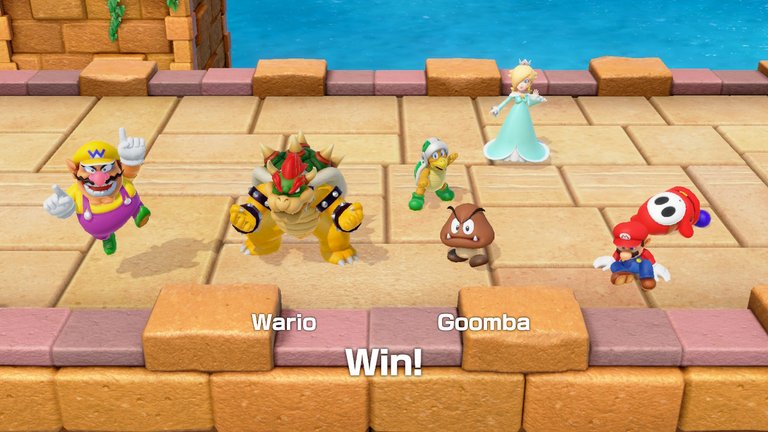
I'll quickly explain what the gameplay is all about for those who have never been exposed to the Mario party series, or didn't come across my last post. On a board of our choice, four players move around the fields with dice to earn coins. The coins are used to buy items, or a star. The person who had the most stars wins. After each turn comes a mini-game, which, depending on the place taken, provides us with coins. The rules themselves are the same, but the vision of the authors changes drastically if we compare the two games. I will describe the changes that irritate me the most:
BOARDS
The production has four playable boards. This is one less compared to the newer release. The difference is not huge, but the difference in design is noticeable. The maps are. boring, quite small and not very revealing. Mechanics and strategies are also not some outstanding. For example, I can give King Bob-omb's Powderkeg Mine here. In the middle of the map is the titular King Bob-omb (the first boss in Mario 64), which explodes when the timer is punched. Then players in the middle of the board lose half of their coins. To the left of the king are mines where players can extract coins.
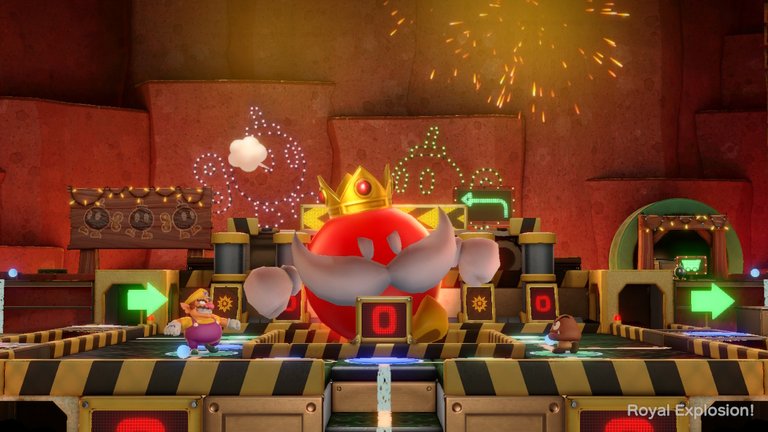
MODEL OF MOVING ON THE MAP
At the beginning of the game and turn, everyone has two dice. The first is the default, which is 1-6, and the second is unique, which has different meshes. Each character has its own unique cube. There are many types of dice, the safer ones (those that don't go beyond the limit of 6 but have a higher chance of more than 1), and the riskier ones that can result in losing coins or movement for up to 10 fields. This is an interesting mechanic, but unfortunately can result in standing on the map or little activity. There are fields and items that select an ally for us. We receive his dice and every time we move, he draws a number 1-2 for us to move. An ally can also help us in mini-games, where allies are allowed. Unfortunately, we will not always have an ally and thus our development will be quite slow. In Mario party Superstars, we had a 1-10 cube at our disposal and this made the whole gameplay much faster (especially with Triple Dice!).
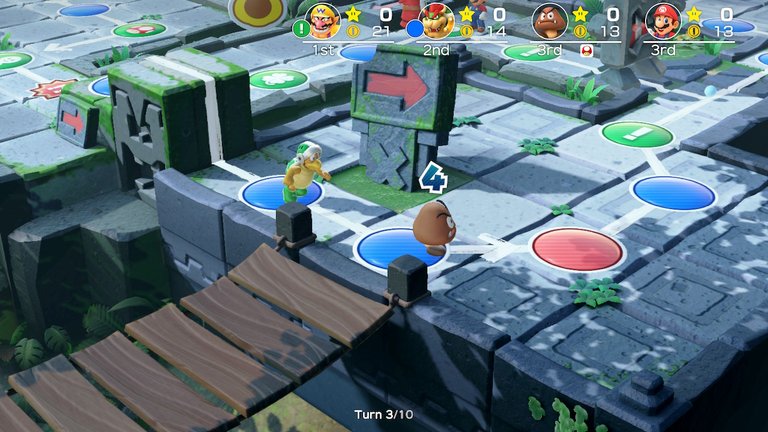
ECONOMY
The main change after switching from Mario party Superstars are the prices of the star and the Golden Pipe (the item that teleports us to the star). These two items cost 10 coins each, where this is an absurdly low price. The whole strategy is then based on circling the map to get the Golden Pipe and buying the star for nothing. The profitability of winning mini-games then drops, because there is already enough income on the boards themselves. While playing Superstars, we had to manage our wealth very wisely, and here.... well.
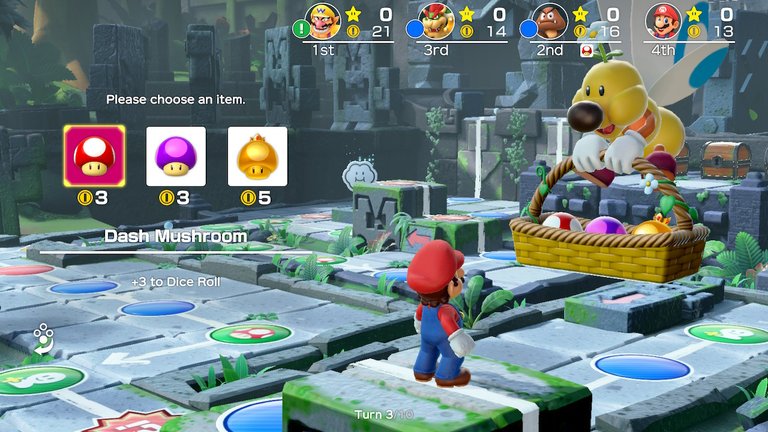
Fortunately, there are also positives of this production and its strong features. I would certainly like to mention here the number of playable characters, because here the authors have made an effort. List of playable characters:
- Mario
- Luigi
- Peach
- Wario
- Waluigi
- Daisy
- Yoshi
- Donkey Kong
- Rosalina
- Diddy Kong
- Bowser
- Bowser Jr.
- Goomba
- Shy Guy
- Koopa
- Monty Mole
- Boo
- Hammer Bro
- Pom Pom
- Dry Bones
As you can see, this is a sizable number. As many as 20 playable characters with their unique dice compared to only 10 from Superstars.
On the plus side, of course, the mini-games. There are a little less of them, 80, but they have one very important advantage. Finally, there are games with motion control that take advantage of the technology embodied in joy-cones. They make clever use of the controllers' vibration and acceleration. As an example, here is a mini-game where we had to guess by vibration what character was hiding under the curtains. Of course, there are also games where we had to control the character.
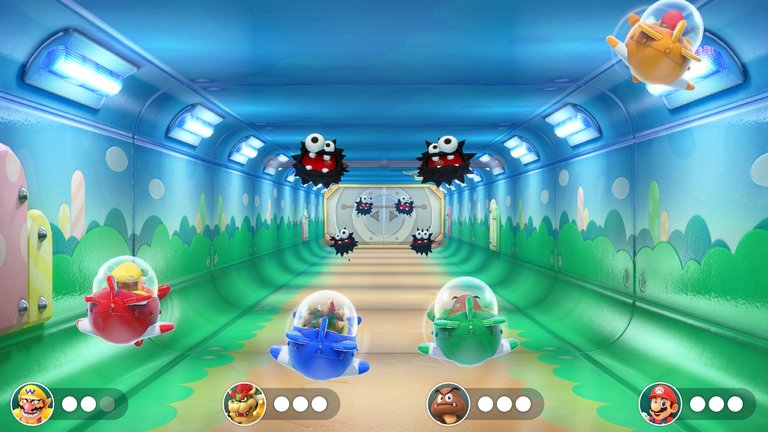
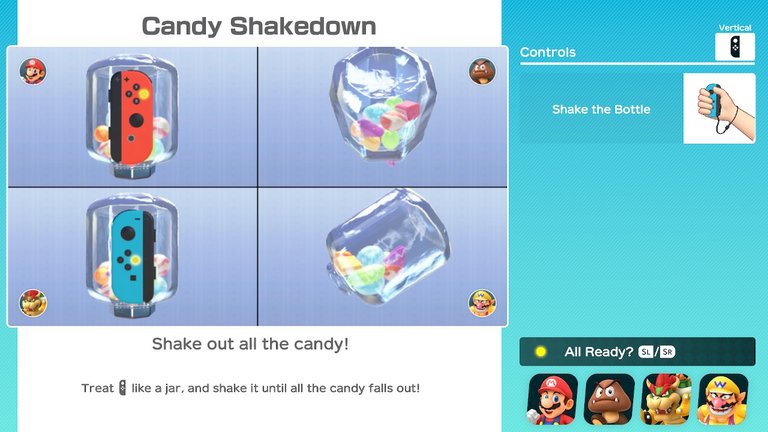
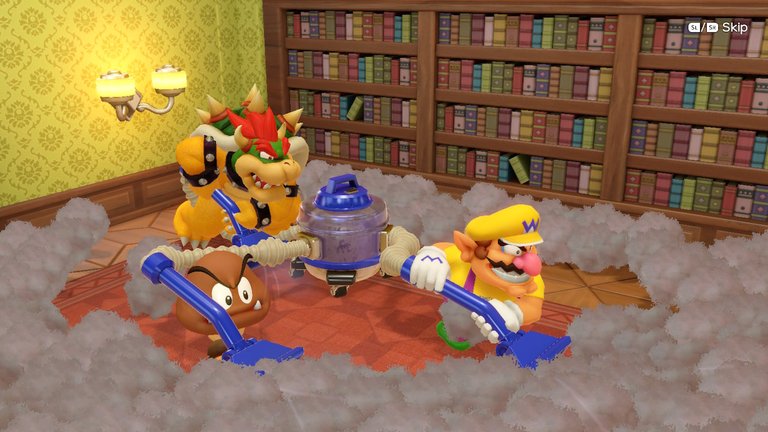
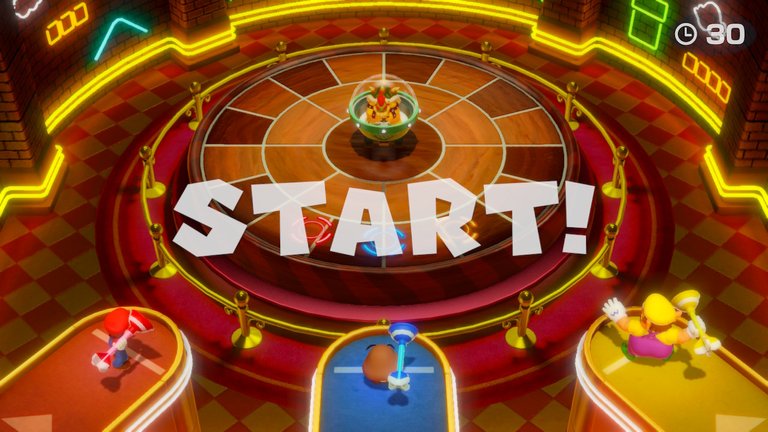
SUMMARY
Super Mario Party is not a bad game, but unfortunately, after the debut of the newer installment, it has gone a bit into oblivion. After inquiries about which game to choose, the choice of Internet users is one-sided. Of course, there are still some downsides, such as the lack of customization of gameplay (options for awarding additional stars or choosing a category of mini-games), inferior online or supporting only joy-cons. Nevertheless, I think the production works nicely as a supplement to Superstars when we are already bored with the boards.
Screenshots used in the post are from the game Super Mario Party (2018) and were taken by me on a Nintendo Switch console. The English version was translated by a translator.
POLISH VERSION 🇵🇱
W ostatnim poście (nie licząc licznych transmisji na żywo) opisywałem aktualnie najlepsze Mario Party na switcha. Teraz chciałbym skupić się na jego największym rywalu (w sumie jedynym), czyli Super Mario Party. Nazwy podobne - Mario Party Superstars i Super Mario Party, można się pogubić przy kupnie. Załóżmy, że niestety zakupiliśmy Super Mario Party. Czy jest naprawdę aż tak źle? Przedstawię moje przemyślenia na temat tej produkcji z 2018 roku. Zapraszam. ;)

Po krótce wyjaśnię na czym polega rozgrywka dla tych, którzy nie mieli nigdy styczności z serią Mario party, bądź nie natrafili na mój ostatni post. Na wybranej przez nas planszy czwórka graczy porusza się po polach kostką, aby zdobyć monety. Za monety kupujemy przedmioty, bądź gwiazdkę. Osoba, która miała najwięcej gwiazdek, wygrywa. Po każdej turze przychodzi czas na mini-grę, która w zależności od zajętego miejsca zapewnia nam monety. Same zasady są takie same, ale wizja autorów drastycznie się zmienia jeżeli porównamy obie te gry. Opisze zmiany, które najbardziej mnie irytują:
PLANSZE
Produkcja posiada cztery grywalne plansze. Jest to o jedna mniej w porównaniu do nowszej odsłony. Różnica nie jest jakaś ogromna, ale różnica w designu jest odczuwalna. Mapy są... nudne, dosyć małe i mało odkrywcze. Mechaniki i strategie też nie są jakieś wybitne. Na przykład mogę tutaj podać King Bob-omb's Powderkeg Mine. Na środku mapy jest tytułowy King Bob-omb (pierwszy boss w Mario 64), który po wybiciu licznika wybucha. Wtedy gracze na środku planszy tracą połowę posiadanych monet. Po lewej stronie od króla są kopalnie, gdzie gracz może wydobyć monety.

SPOSÓB PORUSZANIA PO MAPIE
Na początku gry i tury każdy ma do dyspozycji dwie kostki. Pierwsza jest domyślna, czyli 1-6 i druga unikalna, która ma inne oczka. Każda postać posiada swoją unikalną kostkę. Jest wiele rodzajów kostek, te bardziej bezpieczne (te, które nie wykraczają poza limit 6 ale mają większą szansę na więcej niż 1), oraz te bardziej ryzykowne, które mogą skutkować utratą monet bądź ruch na nawet 10 pól. Jest to ciekawa mechanika, ale niestety może skutkować staniem na mapie bądź mała aktywność. Istnieją pola i przedmioty, które dobierają nam sojusznika. Otrzymujemy jego kostkę oraz przy każdym naszym ruchu losuje dla nas liczbę 1-2 do ruchu. Sojusznik może nam również pomóc w mini-grach, gdzie sojusznicy są dozwoleni. Niestety, nie zawsze będziemy mieli sojusznika i przez to nasz rozwój będzie dosyć wolny. W Mario party Superstars mieliśmy do dyspozycji kostkę 1-10 i przez to cały gameplay był znacznie szybszy (szczególnie przy Triple Dice!).

EKONOMIA
Główna zmiana po przejściu z Mario party Superstars są ceny gwiazdki oraz Golden Pipe'a (przedmiot, który teleportuje nas do gwiazdki). Te dwa przedmioty kosztują po 10 monet, gdzie jest to absurdalnie niska cena. Cała strategia opiera się wtedy na okrążaniu mapy po Golden Pipe'a i kupowaniu gwiazdki za bezcen. Spada wtedy opłacalność wygrywania w mini-grach, ponieważ na samych planszach już jest wystarczający dochód. Podczas grania w Superstars musieliśmy bardzo mądrze zarządzać swoim majątkiem, a tutaj... no cóż.

Na szczęście istnieją również pozytywy tej produkcji i jej mocne cechy. Na pewno chciałbym tutaj wspomnieć o liczbie grywalnych postaci, ponieważ tutaj autorzy się postarali. Lista grywalnych postaci:
- Mario
- Luigi
- Peach
- Wario
- Waluigi
- Daisy
- Yoshi
- Donkey Kong
- Rosalina
- Diddy Kong
- Bowser
- Bowser Jr.
- Goomba
- Shy Guy
- Koopa
- Monty Mole
- Boo
- Hammer Bro
- Pom Pom
- Dry Bones
Jak widzą państwo, jest to pokaźna liczba. Aż 20 grywalnych postaci ze swoimi unikalnymi kostkami w porównaniu do tylko 10 z Superstars.
Na plus oczywiście mini-gry. Jest ich trochę mniej, bo 80, ale mają jedną bardzo ważną zaletę. W końcu są gry z motion control, które wykorzystują technologię ujętą w joy-conach. Mądrze wykorzystują wibracje i akcelerację kontrolerów. Dla przykładu podam tutaj mini-grę, gdzie po wibracjach musieliśmy zgadnąć jaka postać kryje się pod zasłonami. Są oczywiście też gierki, gdzie musieliśmy sterować postacią.




Podsumowanie
Super Mario Party nie jest złą grą, ale niestety po debiucie nowszej odsłony odeszła trochę w zapomnienie. Po zapytaniach którą grę wybrać wybór internautów jest jednostronny. Oczywiście minusów jeszcze trochę jest, takich jak brak dostosowania rozgrywki (opcje przyznawania dodatkowych gwiazdek bądź wybór kategorii mini-gierek), gorsze online lub wspieranie tylko joy-conów. Niemniej jednak uważam, że produkcja fajnie sprawdza jako dodatek do gry Superstars, kiedy jesteśmy już znudzeni planszami.
Screenshoty użyte w poście pochodzą z gry Super Mario Party (2018) i zostały zrobione przeze mnie na konsoli Nintendo Switch. Angielska wersja została przetłumaczona przez translator.